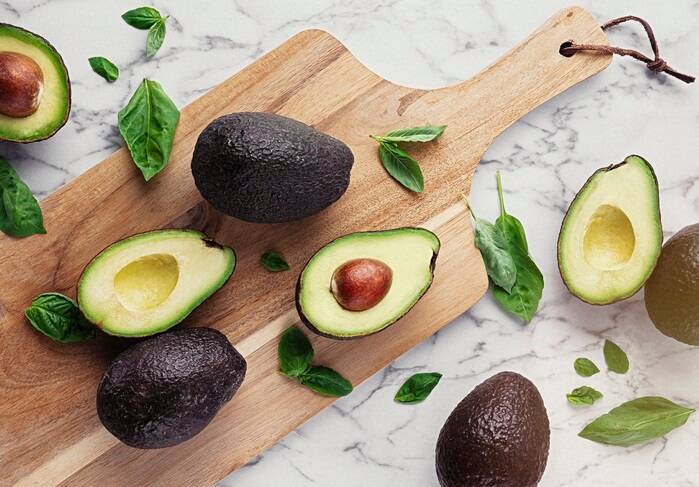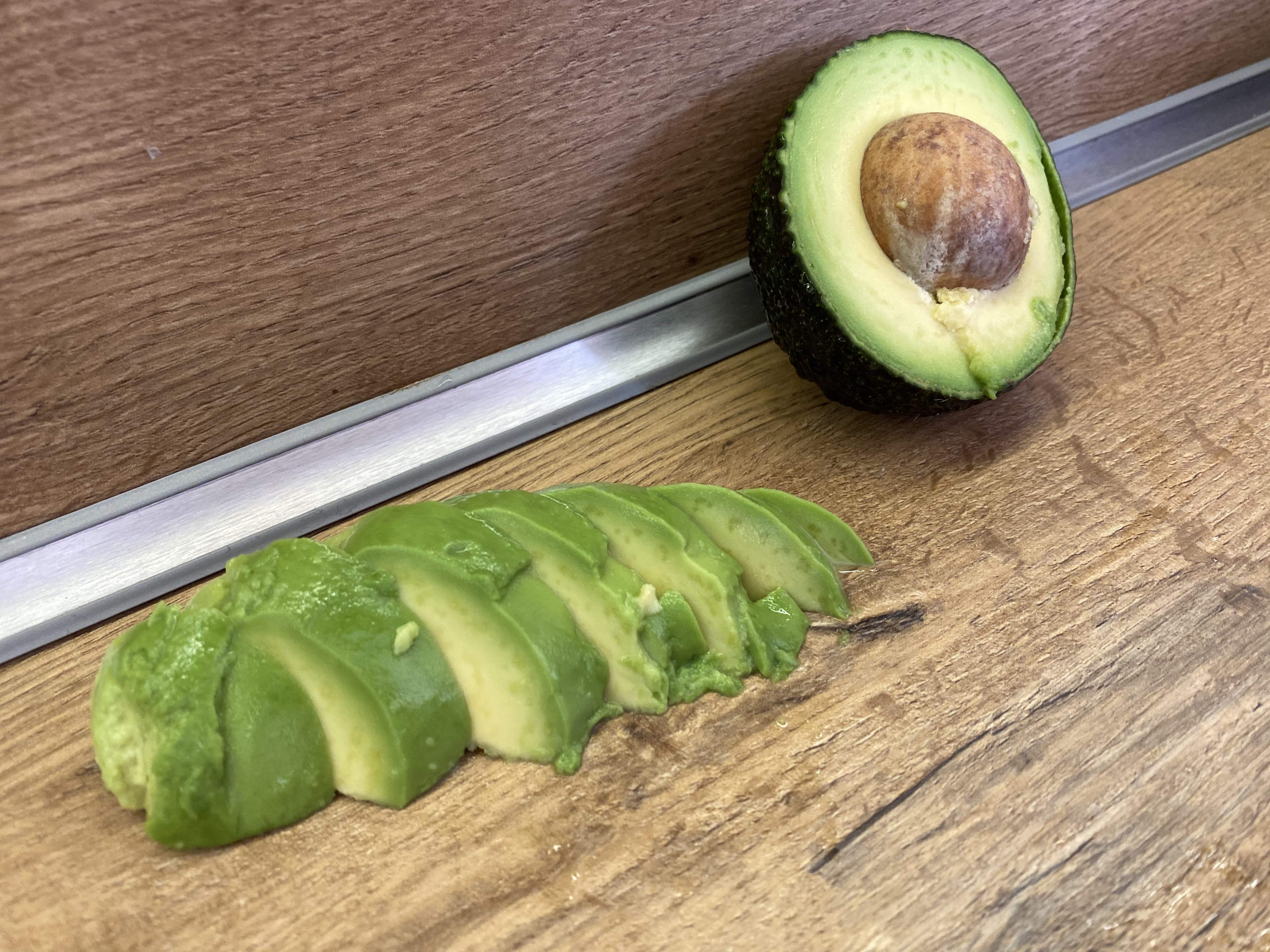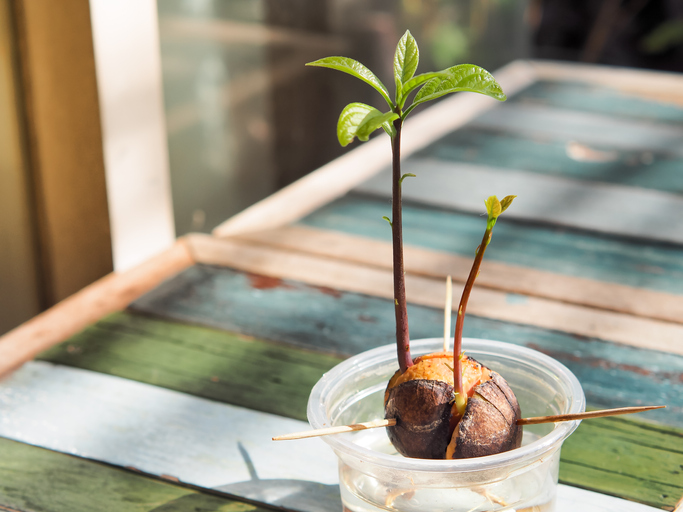Avocado: How to grow it and what are its health benefits?

Avocados are a very popular ingredient in tasty and healthy recipes, but did you know you can grow them at home?
Characteristics
The avocado is the fruit of a tree that can grow up to 20 m. However, cultivated varieties grow 2 to 5 m.
This tropical fruit comes from Central America, where conditions are best suited to it. It needs warmth above all.
Archaeologists have even found traces in Mexico that suggest it was already very popular 9 000 years ago.
It's also said to have been favoured by the Indians of the tropics. They even made liquor from it.
Today, it is grown in Mexico, Brazil and the southern United States, as well as in Spain, Greece and Israel.
Under the right conditions, it can be consumed all year round.
The tree has evergreen leaves. It needs plenty of heat and light, but not direct light.

Avocado fruits also vary in size and shape. Some are round and others are pear-shaped.
The weight of the fruit also varies wildly. The smallest fruits weigh 50 grams, while others weigh a whopping 2 kilograms.
Avocados are usually covered with a brown, yellow-green or purple skin that is not thick but forms a sort of shell.
The surface may be smooth, but most often it is wrinkled.
Under the skin is a light green or light yellow flesh.
There is, however, another part of the avocado to watch out for, and that is the brown pit. The pit usually makes up a quarter of the weight of the fruit.
The flesh consists of a number of vitamins and minerals. Up to 30% of it is fat.
However, it is a very beneficial fat that has an excellent effect on cholesterol and triglyceride levels in the body.
A very similar fat is found in olive oil, but this must be processed. It is found directly in avocados. These fats also cause the higher calorie content of avocados.
Internal use
Avocado is a very popular ingredient in our kitchen lately.
It is used to make spreads, smoothies, soups and sauces. It is also very popular as an ingredient in sushi.
It is also suitable as part of breakfast, lunch and even dinner. It is a great source of vitamins and minerals that are beneficial for our body.
By eating avocados, our body gets vitamins like A, B, C, D, E, K which are great sources of antioxidants.
Among minerals, thanks to avocados we get potassium, phosphorus, magnesium, manganese, calcium, zinc and iron.
This excellent combination of vitamins and minerals has made avocados a superfood.
There is even more potassium in avocados than in bananas. This mineral is important for the circulatory system, lowers blood pressure and also helps to eliminate unnecessary substances from the body.
Antioxidants contribute to good eye and skin health. They also help fight cancer.
It also contains fibre, which aids in proper digestion. Fibre is known as the 'whip' in our intestines. It helps our body get rid of harmful substances and poisons, thus protecting the colon.
Folic acid, vitamin B9, makes us calmer and healthier. This substance has a positive effect on the nervous system, bone and hair health.
Overall, the combination of these vitamins is beneficial in strengthening immunity, which protects us from various diseases. Some of them also have anti-cancer and anti-inflammatory effects.
The healthy fat content of avocados, in addition to adjusting blood cholesterol levels, also promotes a feeling of satiety, which is very useful when dieting.
External use
Avocado is also used externally, especially in the form of face or hair masks.
Avocado oil is excellent, but fresh avocados can also be used.
Avocado oil is used for dry and irritated skin, also to increase the shine and health of the hair.
You can try an avocado oil hair wrap. It will help in preventing hair loss.
Massage the oil into the roots, cover with a warm and damp towel. After a few minutes, wash it off, preferably with a natural shampoo.
You can also put mashed fresh avocado with olive oil on your hair. Massage this mixture from roots to ends and leave it on. Your hair should then be pliable and shiny.
Avocado should also help with dandruff and anti-greasiness. For dandruff, just add honey and tea tree oil.
You can also prepare an avocado mask to moisturize and refresh your skin. Thanks to its composition, it also helps fight wrinkles or acne.
Just massage mashed avocado or avocado oil into your skin regularly.
Avocado and its effects can also be used after shaving. If you have irritated skin after shaving, rub it with avocado oil.
Harvesting and storage
The interesting thing about the avocado is that it does not ripen on the tree. The harvest of the avocado depends mainly on the variety. Then we observe its size and colour.
Avocados ripen at room temperature, but if you want to speed up the ripening process, you can wrap them in newsprint or place them next to ripe bananas.
On the other hand, if you want to slow down the ripening process, just place it in the fridge or even in the freezer.
How to grow avocados at home?
You can try it yourself. There are even more ways to grow it at home. You can try planting it directly in the ground, in a moistened napkin or newspaper.
It is difficult to grow because the fruit is imported immature and underdeveloped. However, it is worth a try.
Alternatively, try this experiment - all you need is a jar or pot without a water hole, a skewer and, of course, a fresh stone.
The stone for home growing should be from a properly grown and ripe avocado.
It is important to get rid of the outer skin of the stone when sprouting. Some recommend cutting the stone open.
Then prick the stone with a skewer and soak most of it in water. The water needs to be replenished as it evaporates.
The seed will do best in a sunny room, but not in direct sunlight.

The first sprouts should appear after 2 months. Only when a stem of about 10 cm has appeared, which could be after 4 months, can we plant our seed in the ground.
The soil for avocados should be composed of both sand and soil and should be neutral (approximately pH 5,5 to 7).
Depending on the cultivar and variety, an avocado tree may first bear fruit between 4 and 8 years of age.
The tree's inflorescence can be recognised by its small yellow-green flowers, which have an anise-like scent.










